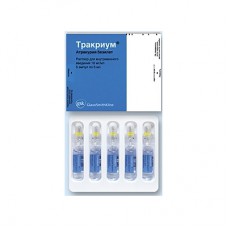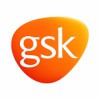Expiration date: 04/2026
The composition and form of issue:
The intravenous solution. 1 ml contains:
besilate atracurium 10 mg
excipients: the solution benzolsulfonat acid water for injections
in ampoules of 2.5 and 5 ml, pack of 5 PCs.
Pharmacological action:
Does n-holinoretseptora skeletal muscles, preventing depolarization of the endplate muscle fiber caused by acetylcholine.
Pharmacokinetics:
Inactivated by Hoffmann elimination.
Clinical pharmacology:
The effect is fast — 60-90 s, lasts 15-30 C (depending on dose) and ends in conjunction with enzymatic and enzymatic hydrolysis of the drug (nonspecific esterase). Removing the neuromuscular block is not dependent on hepatic and renal metabolism and excretion. Has no effect on n.vagus ganglia or not is contraindicated in bradycardia associated with the use of anesthetic agents or vagal stimulation (during operations).
Indications:
Relaxation of skeletal muscles for holding endotracheal intubation during General anesthesia, surgical operations, IVL.
Contraindications:
Hypersensitivity.
Application of pregnancy and breast-feeding:
Perhaps if the expected effect therapy outweighs the potential risk to the fetus. Can be applied for caesarean section.
Side effects:
Convulsions (in patients with predisposing pathology) redness of the skin, transient hypotension, bronchospasm (associated with release of histamine), anaphylactic reaction.
Drug interactions:
Neuromuscular blockade increase halothane, isoflurane, enfluran, aminoglycosides, polymixin, spectinomycin, tetracyclines, lincomycin, clindamycin, propranolol, BPC, lidocaine, procainamide, quinidine, furosemide, mannitol, thiazide diuretics, acetazolamide, magnesium sulphate, ketamine, lithium salts, trimetafan, gexametoni weaken — anticonvulsants. Mask myasthenia gravis or cause myasthenic syndrome (which leads to increased sensitivity to the drug) procainamide, quinidine, chloroquine, d-penicillamine, trimetafan, chlorpromazine, steroids, phenytoin, lithium, propranolol, oksprenolol, antibiotics. Incompatible with depoliarizutmi miorelaxanthami (suxamethonium) as may sustainable neuromuscular block by anticholinesterase drugs.
Method of application and dose:
Adults and children older than 1 month.
Bolus
The recommended dose for adults is 0.3–0.6 mg/kg (depending on the duration of neuromuscular blockade), which provide adequate mioplegii within 15-35 min.
Tracheal intubation can be performed within 90 s after I/V administration of Tracrium at a dose of 0.5–0.6 mg/kg.
Duration of complete neuromuscular blockade may be increased by introduction of additional doses at the rate of 0.1–0.2 mg/kg, which is not accompanied by cumulation of the drug. Spontaneous recovery of conductivity after complete neuromuscular blockade observed in approximately 35 min (determined by restoration of the tetanic contraction to 95% of the original). Neuromuscular conduction can be quickly restored with the introduction of anticholinesterase drugs (neostigmine, etc.) in combination with atropine without signs of recurarization.
Infusion introduction
After the initial bolus injection of Tracrium at a dose of 0.3–0.6 mg/kg it can be administered by continuous infusion at a speed of 0.3–0.6 mg/kg/h for maintenance of neuromuscular blockade during extended surgical procedures. This method of administration can be recommended in operations on the heart and lungs.
With artificial hypothermia, accompanied by a decrease in body temperature to 25-26 °C, the rate of inactivation of atracurium is reduced, therefore, to maintain the full mioplegii infusion rate should be reduced approximately in 2 times.
Elderly patients Tracrium administered in standard doses, however, it is preferable to use the lower level of the recommended range of doses and to inject the drug slowly.
When violation of the liver and/or kidney disease, including end-stage hepatic or renal failure, Tracrium administered in standard doses.
Use in diseases of the cardiovascular system. In patients with severe cardiovascular disease the initial dose should be administered for at least 60 s.
Application in intensive care units. To maintain mioplegii after the initial bolus injection in a dose of 0.3–0.6 mg/kg Tracrium can be entered by continuous infusion with the rate of 11-13 mcg/kg/min (0,65–0,78 mg/kg/h). In different patients the dose is not uniform and can change over time. Some patients may require low doses such as 4.5 mg/kg/min (0.27 mg/kg/h), and such a high dose, as was 29.5 micrograms/kg/min (1,77 mg/kg/h). Spontaneous recovery of neuromuscular conduction (T4/T1>,0,75) typically occurs approximately 60 minutes (in clinical trials this period ranged from 32 to 108 min) after infusion of Tracrium and its speed depends on the duration of drug administration.
Instructions for use
Tracrium compatible with the following infusion solutions.
| Recovery solution | A period of stability, h |
| A solution of sodium chloride for the on/in infusions (0,9%) | 24 |
| Glucose solution for the on/in infusions (0,9%) | 8 |
| Ringer solution for injections | 8 |
| A solution of sodium chloride (0.18 percent) and glucose (4%) for the on/in infusion | 8 |
| Hartman's solution for injection | 4 |
Solution Tracrium at a dilution of compatible infusion solutions to obtain a concentration of atracurium bezilata not less than 0.5 mg/ml is stable for a set period of time in normal lighting and temperatures up to 30 °C.
Overdose:
Symptoms: mioplegii.
Treatment: IVL, anticholinesterase drugs with atropine.
Precautions:
With clinically significant cardiovascular disease and/or risk of hypotension (hypovolemia) should be administered slowly (over 60). You cannot mix in the same syringe with thiopental or other alkaline agents. Cautious use in patients with hypersensitivity to histamine.


